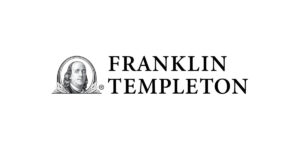Uddrag fra BNPparibas:
The German government has presented its draft budget for 2025, which is expected to be adopted in September. It is a breakaway budget marked by a clear return to public investment and support for business investment, at the cost of a significant increase in debt. This budget is one of the pillars of Germany’s new policy, which should have a rapid positive impact on growth.
The German government presented its budget for 2025
On Tuesday 24 June, the German government presented the main outlines of its budget for 2025 and its projections until 2029.
A bill to implement the borrowing authorisations for the EUR 500 billion special fund for infrastructure and low-carbon transition was also tabled. The text has been sent to Parliament for review and possible amendments before the summer recess, ahead of a vote scheduled for September. The budget is not expected to encounter any major obstacles. Indeed, the vote only requires a simple majority, and the CDU/CSU and its coalition partner, the SPD, constitute a majority.
The government intends to modernise the country and return to a potential growth of at least 1% as quickly as possible. To achieve this, it is banking on targeted public investment in strategic sectors, structural reforms and tax incentives to stimulate private investment (see the ‘Investitionssofortprogramm’ law adopted on 26 June 2025).
The 2025 draft budget structures the public investment strategy and organizes a ramp-up of this spending:
– Starting in 2025, Germany plans to invest around EUR 120 billion per year in public infrastructure (2.7% of 2024 reference GDP). Funding will prioritise transport (particularly rail) and housing, but also digital technology, education and the energy transition.
– A steady increase in defence spending is planned, reaching 3.5% of GDP in 2029 (an average of EUR 160 billion per year); the ramp-up will be rapid (2.4% of GDP in 2025, 3% in 2027).
– This unprecedented increase in public investment will be enabled by special dedicated funds, but also by the requirement to allocate at least 10% of the core budget to investment spending. By way of comparison, the latter accounted for only 2.7% of total federal public spending on average over the period 2000-2020.
A rapid impact on the economy is expected
This strategy of massive and rapid investment should have a rapid impact on the economy. The increase in public spending will automatically support growth. It could also have a knock-on effect on the economy as a whole, especially since, according to economic literature, the budget multiplier is generally higher for investment spending than for consumption spending. The multiplier is also greater when production capacity is underutilised, which is the case in Germany.
This knock-on effect could be facilitated by the enhanced depreciation allowance provided for in the Investitionssofortprogramm law, which allows companies to deduct 30% of the amount of their equipment investments made until 2027 from their taxes. We estimate that this will contribute +0.4 percentage points to German growth in 2025 (including 0.3 percentage points of direct impact on investment and public consumption, and 0.1 percentage points of indirect impact) and +0.7 percentage points in 2026 (0.5 percentage points of direct impact and 0.2 percentage points of indirect impact)[1].
This breakaway budget comes with a significant increase in debt, bringing an end to the country’s fiscal orthodoxy at least for the time being. Over the period 2025-2029, additional debt is expected to reach nearly EUR 850 billion[2], with an average annual deficit of 3.5%. The public debt-to-GDP ratio would increase by +8.6 pp by 2030 compared to 2024, to 71% according to our calculations. However, this trajectory is based on ambitious growth assumptions (average nominal growth of +3.3% per year between 2025 and 2030) and remains subject to contingencies, notably changes in market conditions and the effective implementation of fiscal consolidation measures. We therefore anticipate a rise in the 10-year rate to 2.9% at the end of the year (i.e. around +50bp in one year), and 3.3% at the end of 2026. At that level, stabilising German debt would require reducing the public deficit to -0.1% over the remainder of the horizon[3].



